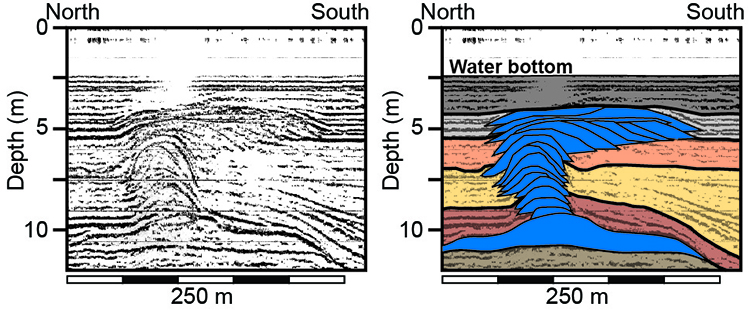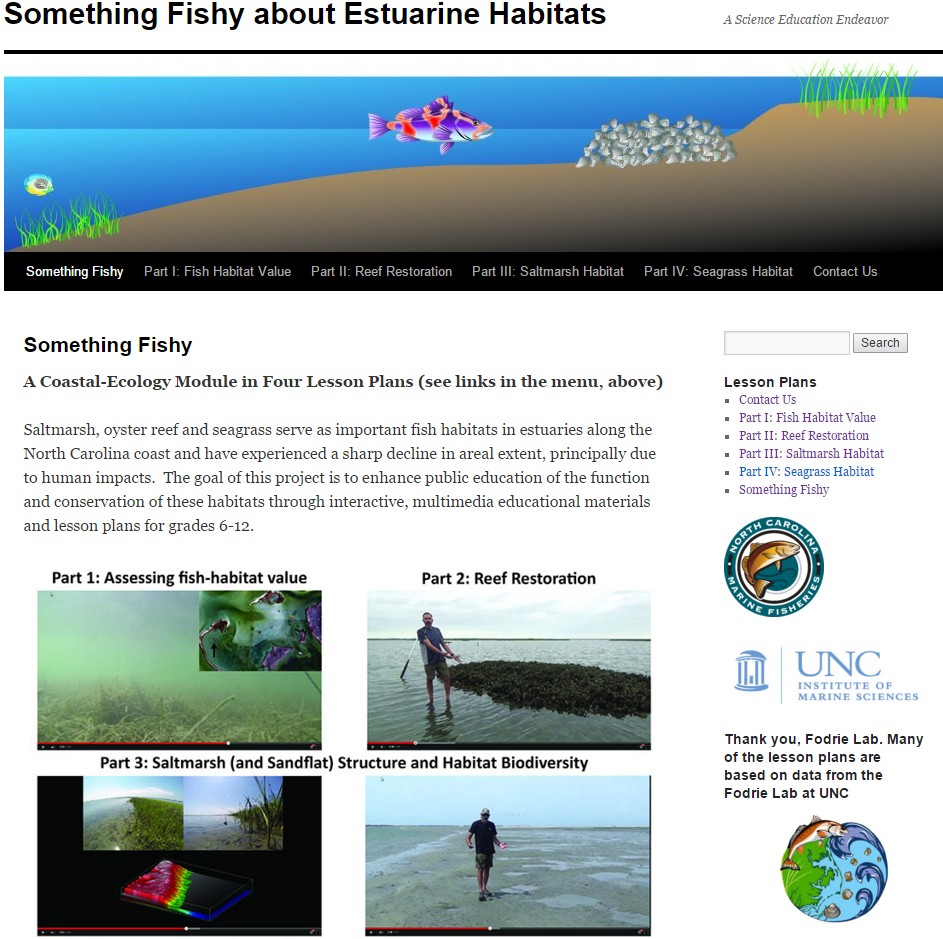
Oyster reefs are similar to other carbonate depositional environment such as coral reefs. The largest difference is that oyster reefs are located in estuaries and sediment loading from external sources, like rivers and shoreline erosion, is much higher than what corals experience. Being filter feeders, oysters are designed for the estuarine environment and take advantage of the plentiful suspended matter in the water column. However, too much of a good thing can be deathly. Oyster reefs need to grow rapid enough so that they don’t become buried in sediment. In most estuaries, sediment accretion matches the rate of sea-level rise (SLR), so if oyster reefs cannot grow more than 3 or 4 mm/year (the rate of SLR) they will cease to exist. Above, is a seismic line from Nueces Bay, Texas. Highlighted in blue is a large oyster reef, which kept pace with SLR and sediment accumulation (highlighted in those other colors), until it gave up and was buried by that most recent sedimentary unit shown in gray. Why did the reef fall behind and give up all of a sudden? Perhaps it became diseased or maybe sediment loading in the water column was just too much for the reef to handle? Important questions to address if we want to improve conservation and restoration efforts.



